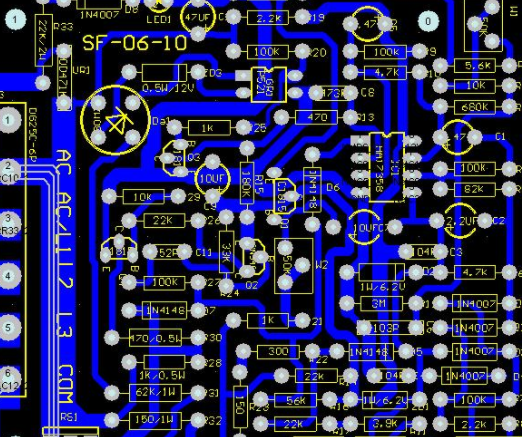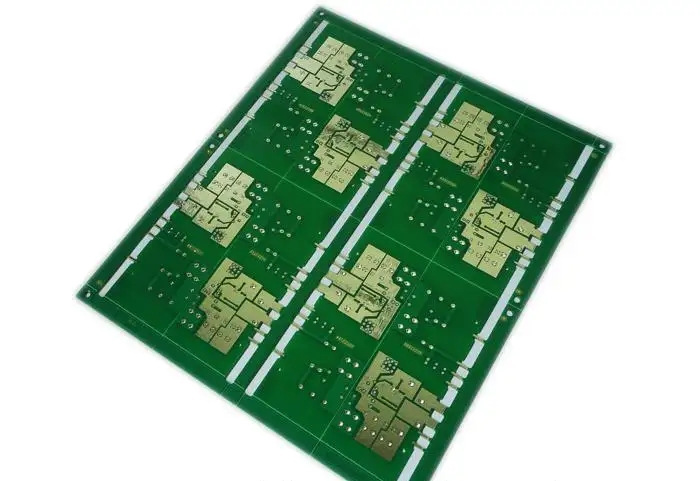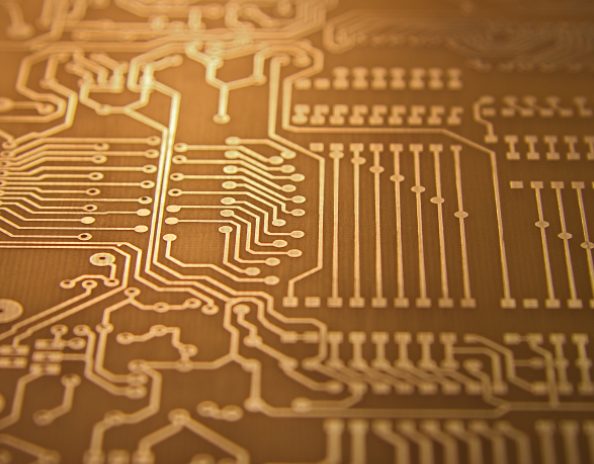
Reliability Design of PCB in High Speed DSP System
Characteristics of high-speed DSP system PCB board and several problems that should be paid attention to in reliability design, including power supply design, hardware and software anti-interference design, electromagnetic compatibility design, heat dissipation design, and wiring method of important signal lines of high-speed circuit, make each design more efficient Reasonable and easy to implement Due to the rapid development of microelectronics technology, digital electronic systems composed of integrated circuit chips are developing rapidly in the direction of large-scale, small size, and high speed In modern EDA design, the application of new devices leads to high circuit layout density and high signal frequency Using high-speed devices, this will be more and more high speed DSP (digital signal processing) system designs In the design characterized by the increasing system data rate, the signal problem has become an important problem. Clock frequency and circuit density. The PCB design shows very different behaviors from the low-speed design features, that is, signal integrity problem, interference enhancement problem, electromagnetic compatibility problem, and so on These problems may cause or directly cause signal distortion, timing error, incorrect data, address, and control line, system error, and even system crash If they are not solved correctly, they will seriously affect the system performance and cause immeasurable losses The solution of these problems mainly depends on the circuit design Therefore, the design quality of PCB is very important, which is the only way to turn the design concept into reality The following discusses several problems that should be paid attention to in the test: reliability design of PCB high-speed DSP system
PCB board

Power supply design
The first thing to consider when designing a high-speed DSP system is the power supply design In power supply design, the following methods are usually used to solve signal integrity problems
Consider decoupling of power and ground
With the increase of DSP operating frequency, DSP and other integrated circuit components tend to be miniaturized and densely packaged. In general, multilayer boards are considered in circuit design. It is recommended to use special layer for power supply and grounding. For example, if the input/output power supply voltage of DSP is different from the core power supply voltage, two different power layers can be used. If considering the high processing cost of multi layer boards, special layers can be used for power supplies with more cabling or relatively critical power supplies, or other power layers can be used. The wiring duct of the power supply can be the same as the signal line, but pay attention to the width of the line. Regardless of whether the circuit board has a special grounding layer and power supply layer, a certain and reasonably distributed capacitance must be added between the power supply and the grounding. In order to save space and reduce the number of through holes, it is recommended to use more chip capacitors. The chip capacitor can be placed on the back of the PCB board, that is, the welding surface. The chip capacitor is connected to the hole through a wide wire, and connected to the power supply and ground plane through the hole.
Consider wiring rules for power distribution
Independent analog and digital power plane: high-speed, high-precision analog components are sensitive to digital signals. For example, the amplifier will amplify the switching noise to make it close to the pulse signal. In the analog and digital parts of the circuit board, it is usually necessary to separate the power plane.
Isolation of sensitive signals: some sensitive signals (such as high-frequency clock) are particularly sensitive to noise interference, and advanced isolation measures should be taken. High frequency clock (clock higher than 20MHz or clock with flip time less than 5ns) must be escorted by ground wire. The width of the clock wire shall be at least 10 mils, and the width of the escort ground wire shall be at least 20 mils. The hole is in good contact with the stratum, and a through-hole is made every 5cm to connect with the stratum; Must be connected in series at the clock sending side © To 220 ° C © Damping resistor of. The interference caused by the signal noise introduced by these lines can be avoided.
Software and hardware anti-interference design: PCB of high-speed DSP application system is generally designed by users according to the specific requirements of the system. Due to the limitation of design capability and laboratory conditions, if complete and reliable anti-interference measures are not taken, the DSP program flow will be confused due to the unsatisfactory working environment and electromagnetic interference. When the normal working code of DSP cannot be recovered, the program will run or crash, or even damage some components. Corresponding anti-interference measures shall be taken.
Hardware anti-interference design: hardware anti-interference efficiency is high. When the system complexity, cost and volume can be tolerated, hardware anti-interference design is preferred. Common hardware anti-interference technologies can be summarized as follows:
(1) Hardware filtering: RC filter can greatly weaken various high-frequency interference signals. For example, "small fault" interference can be suppressed.
(2) Reasonable grounding: reasonably design the grounding system. For high-speed digital and analog circuit systems, it is very important to have a large area of ground plane with low impedance. The ground plane can not only provide a low impedance return path for high-frequency current, but also make EMI and RFI smaller, and mask external interference. When designing PCB, analog and digital are separated.
(3) Shielding measures: sparks and arcs generated by AC power supply, high-frequency power supply and strong current equipment will generate electromagnetic waves and become noise sources of electromagnetic interference. The above equipment can be surrounded by a metal shell and then grounded. Interference caused by electromagnetic induction is very effective.
(4) Optical isolation: optical isolator can effectively avoid mutual interference between different circuit boards. High speed optical isolators are usually used for interfaces between DSP and other devices (such as sensors, switches, etc.).
Software anti-interference design: software anti-interference has the advantages that hardware anti-interference cannot replace. In the DSP application system, the anti-interference ability of the software should be given full play to suppress the influence of interference. Several effective software anti-interference methods are given below.
(1) Digital filtering: noise of analog input signal can be eliminated by digital filtering. Commonly used digital filtering technologies include median filtering, arithmetic average filtering, etc.
(2) Set Trap: Set the bootstrap in the unused program area. When the program is disturbed and jumps to this area, the bootstrap will guide the forcibly captured program to the specified address, where a special program will be used to correct the wrong program. To be handled.
(3) Instruction redundancy: insert two or three bytes of NOP without operation instruction after double byte instruction and three byte instruction, which can prevent the DSP system from automatically entering the correct track when it is interfered by the program.
(4) Set watchdog timing: If the out of control program enters "infinite loop", usually use "watchdog" technology to exit the program from "infinite loop". The principle is to use a timer to generate pulses according to the set period. If you do not want to generate this pulse, the DSP should clear the timer within less than the set period; However, when the DSP program is running, it will not be used. The timer will be cleared as required, and the pulse generated by this timer will be used as the DSP reset signal to reset and initialize the DSP again.
EMC design: EMC refers to the ability of electronic equipment to work normally in complex electromagnetic environment. The purpose of EMC design is to reduce the electromagnetic interference of electronic equipment to other electronic equipment while suppressing various external interference. In actual PCB boards, there is more or less electromagnetic interference between adjacent signals, namely crosstalk. The crosstalk is related to the distributed capacitance and inductance between loops. The following measures can be taken to solve mutual electromagnetic interference between such signals:
Select reasonable wire width: the impact interference caused by the transient current on the printed wire is mainly caused by the inductance component of the printed wire, whose inductance is proportional to the length of the printed wire and inversely proportional to the width. It is beneficial to use short and wide wires to suppress interference. The clock lead and signal line of busbar driver usually have large transient current, and the printed wire should be as short as possible. For discrete component circuits, the width of the printed wire can meet the requirements of about 1.5mm; For integrated circuits, the width of printed wire shall be between 0.2mm and 1.0mm. Grid wiring structure is adopted. The specific method is to horizontally wire the first layer of PCB on the printed circuit board, and then vertically wire the next layer.
Heat dissipation design: to facilitate heat dissipation, the printed boards shall be installed independently, and the board spacing shall be greater than 2cm At the same time, pay attention to the arrangement rules of components on the printed board In the horizontal direction, the high-power device is as close to the edge of the printed circuit board as possible, so as to shorten the heat transfer path; In the vertical direction, high-power equipment shall be as close to the top of the printed board as possible to reduce its impact on the temperature of other parts Parts more sensitive to temperature shall be placed in areas with relatively low temperature as far as possible, and shall not be placed directly above equipment with high heat generation In the design of high-speed DSP application system, how to transform the perfect design from theory to reality depends on the high-quality design PCB The working frequency of DSP circuit is getting higher and higher, the pins are getting denser and denser, and the interference is getting bigger and bigger, How to improve the signal quality is very important Therefore, the effectiveness of the system is closely related to the quality of PCB







